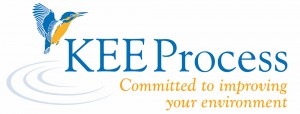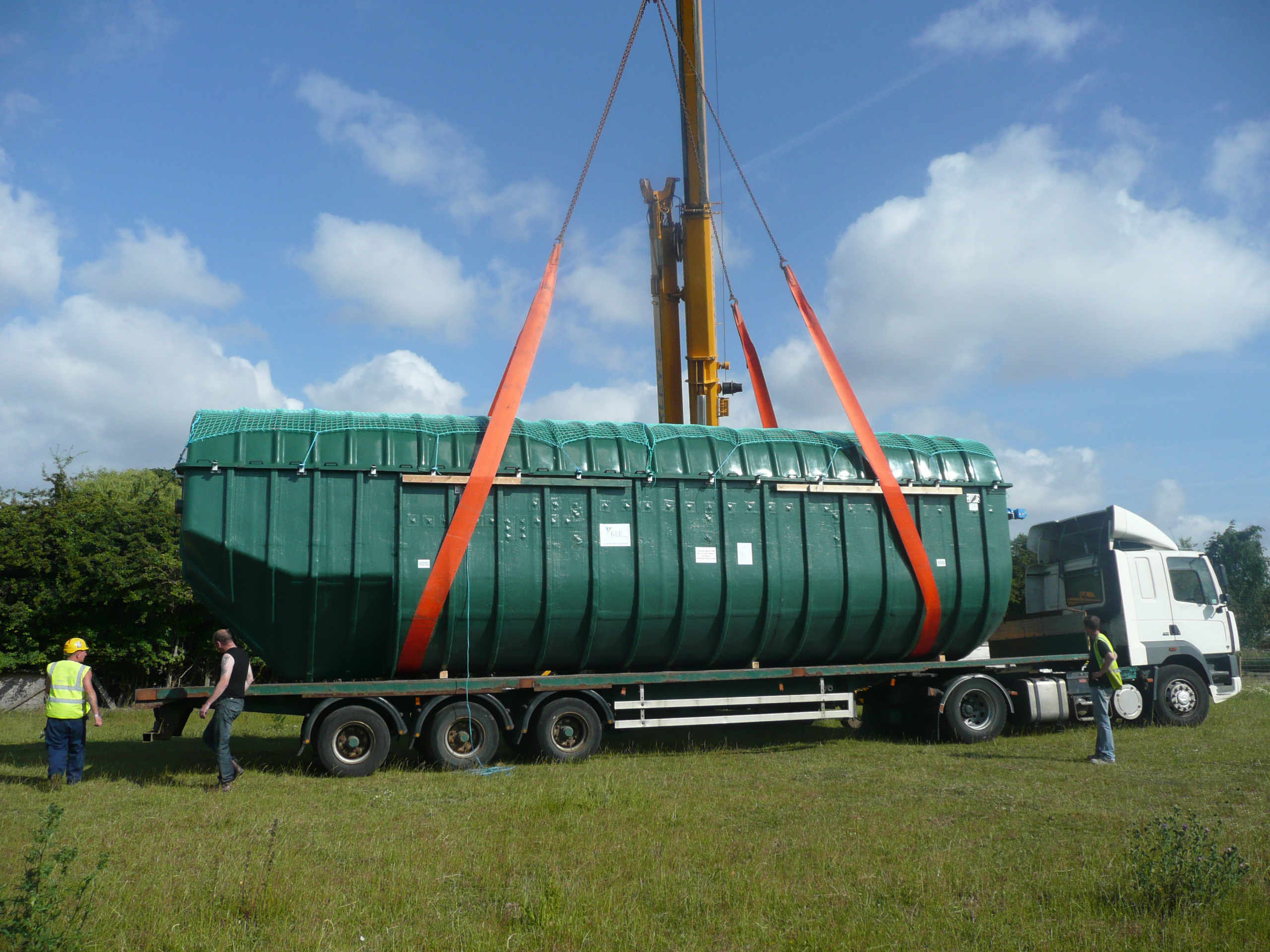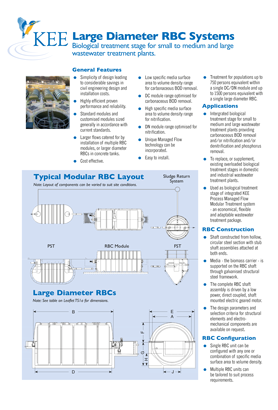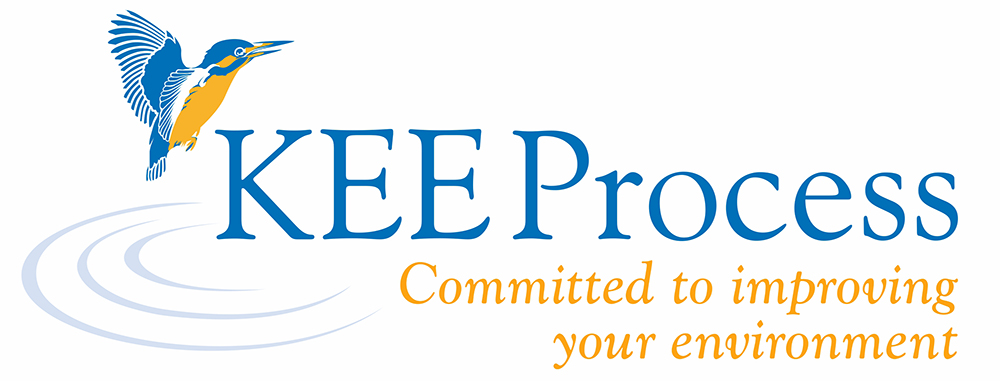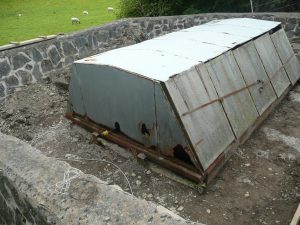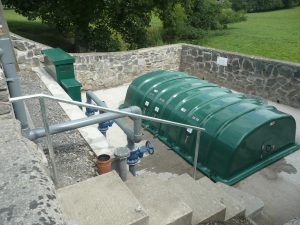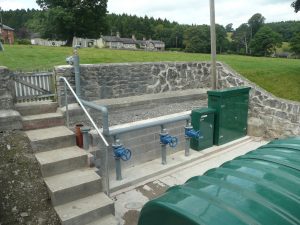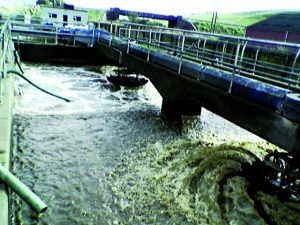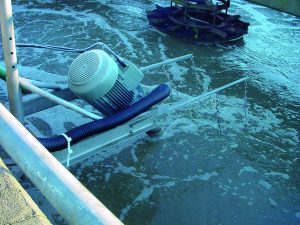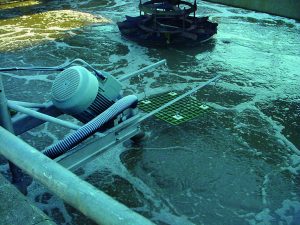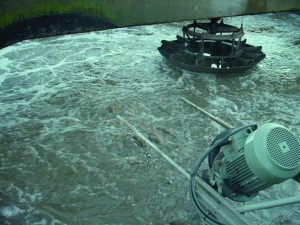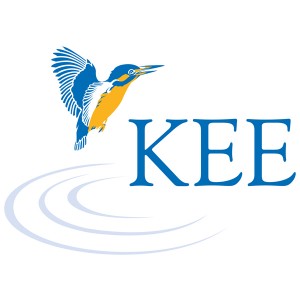KEE – FINE BUBBLE AERATION SYSTEM WITH BUILT-IN MIXER
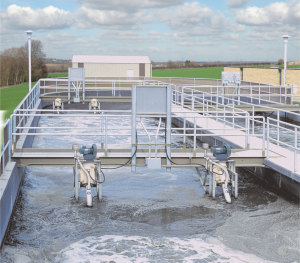
The patented new Dual Mode Processor called the Triton Aerator/Mixer.
This new technology overcomes the previous limitations of oxidation ditch technology and can be used to revitalise existing oxidation ditches and technology.
Oxidation ditch technology is one of the oldest ways of treating wastewater. Whilst it enables wastewater to be treated to a high standard, including nitrification and de-nitrification, it does have significant limitations.
The process requires aerated and mixed liquor to continuously move through the aeration ditch. Brush rotors and disc rotors aerate and mix the liquor but, because they can only maintain the necessary fluid velocity of 0.3 – 0.4m/s in a shallow depth of no more than 2m, the footprint area of the oxidation ditch is extremely large.
The Triton Aerator and Mixer Aerator is an energy efficient, dual mode (aeration and mixing) process aerator that is capable of nitrification and de-nitrification all in one unit. With two propellers and a regenerative blower, it is able to operate either as an anoxic mixer with the blower turned off, or a very efficient aerator/mixer with the blower turned on.
With its two mixing propellers, the Triton is able to achieve significant velocities in depths of up to 10m. This means the oxidation ditch basin can now be built up to 10m deep, therefore significantly reducing the footprint area.
The Triton Aerator/Mixer’s primary and secondary propellers inject air bubbles (defined by the Environmental Protection Agency as “fine bubble”) into a high velocity stream (plume) below the surface of the water and provide flow linkage mixing in multiple unit arrangements.
The Triton can also be used to revitalise existing oxidation ditch systems with failing brushes or disc rotors. If the rotors have totally failed, the Triton can replace them.
CASE STUDY
Franklin’s plant has two oxidation ditch systems operating in parallel, each of which treats 4536m3/day, with influent BOD of 185mg/l and TSS of 90mg/l. The Oxidation Ditch Wastewater Treatment Plant at Franklin was failing to meet the consent of 15mg/l BOD and 23mg/l TSS. Because the rotors required daily lubrication, maintaining them was a time consuming and costly exercise. So when the rotors fractured and failed four years ago, the decision was made to upgrade the plant by replacing the brush rotors with the Triton Aerator/Mixer.
During the upgrade each ditch was fitted with four Triton each rated 18.6 kW. This represents a maximum of just over 2kWh of electrical energy per kg of BOD or 0.4 kWh/m3 flow.
The final effluent quality from the refurbished oxidation ditch is testimony to the excellence of the Triton. The result of the upgrade was final effluent with BOD of between 2 and 3mg/l and TSS well below 15mg/l. Independent velocity measurements at extremities are well above the minimum 0.3m/sec, therefore guaranteeing that no solids deposit would develop in the basin. At the same time, maintenance requirements have been substantially reduced to a simple lubrication task once every six months.
For full information on KEE Fine Bubble Aeration visit:
http://www.fine-bubble-aeration.co.uk/
For full information on KEE Technologies and Services visit:
http://www.keegroup.co.uk
